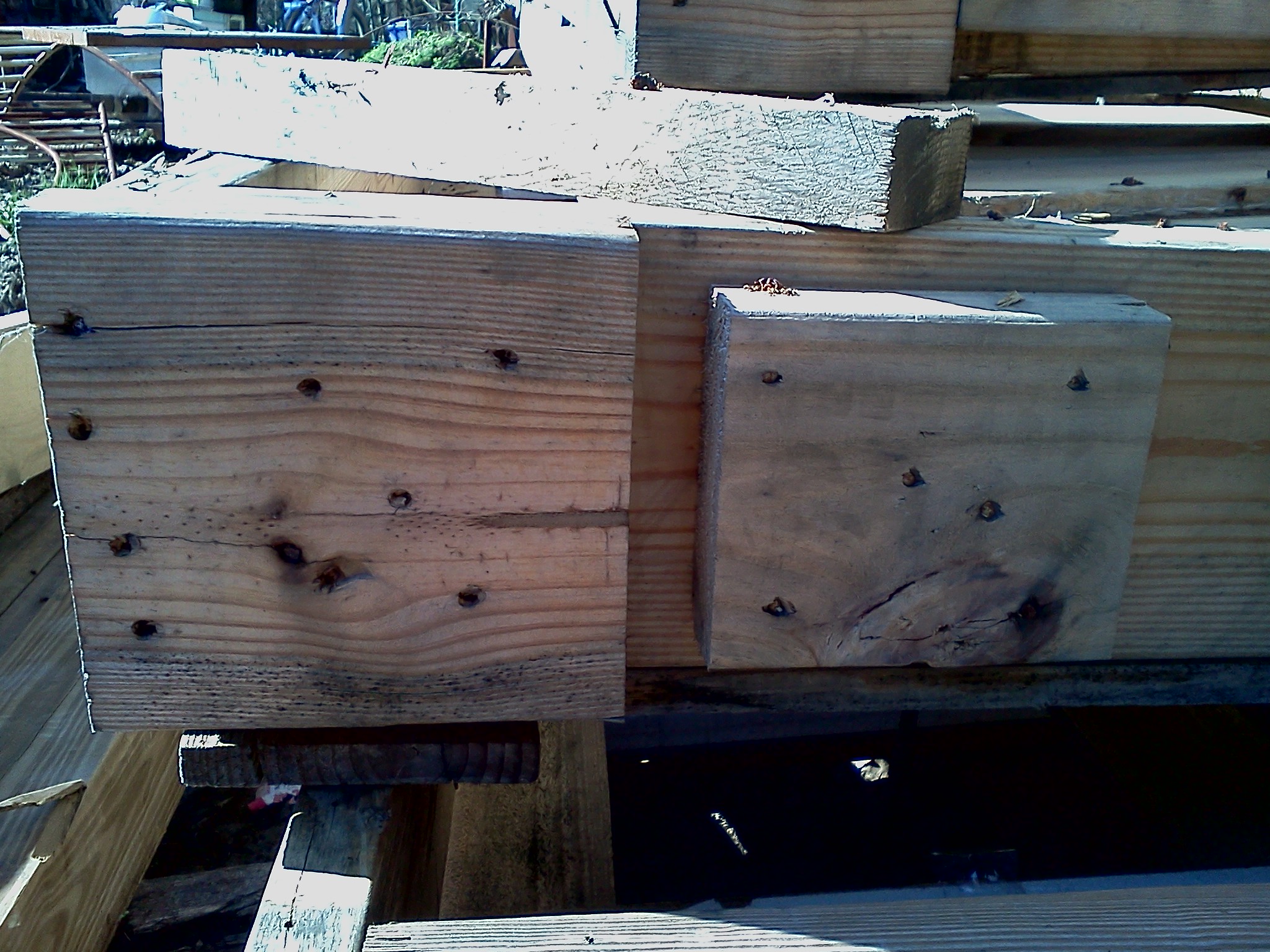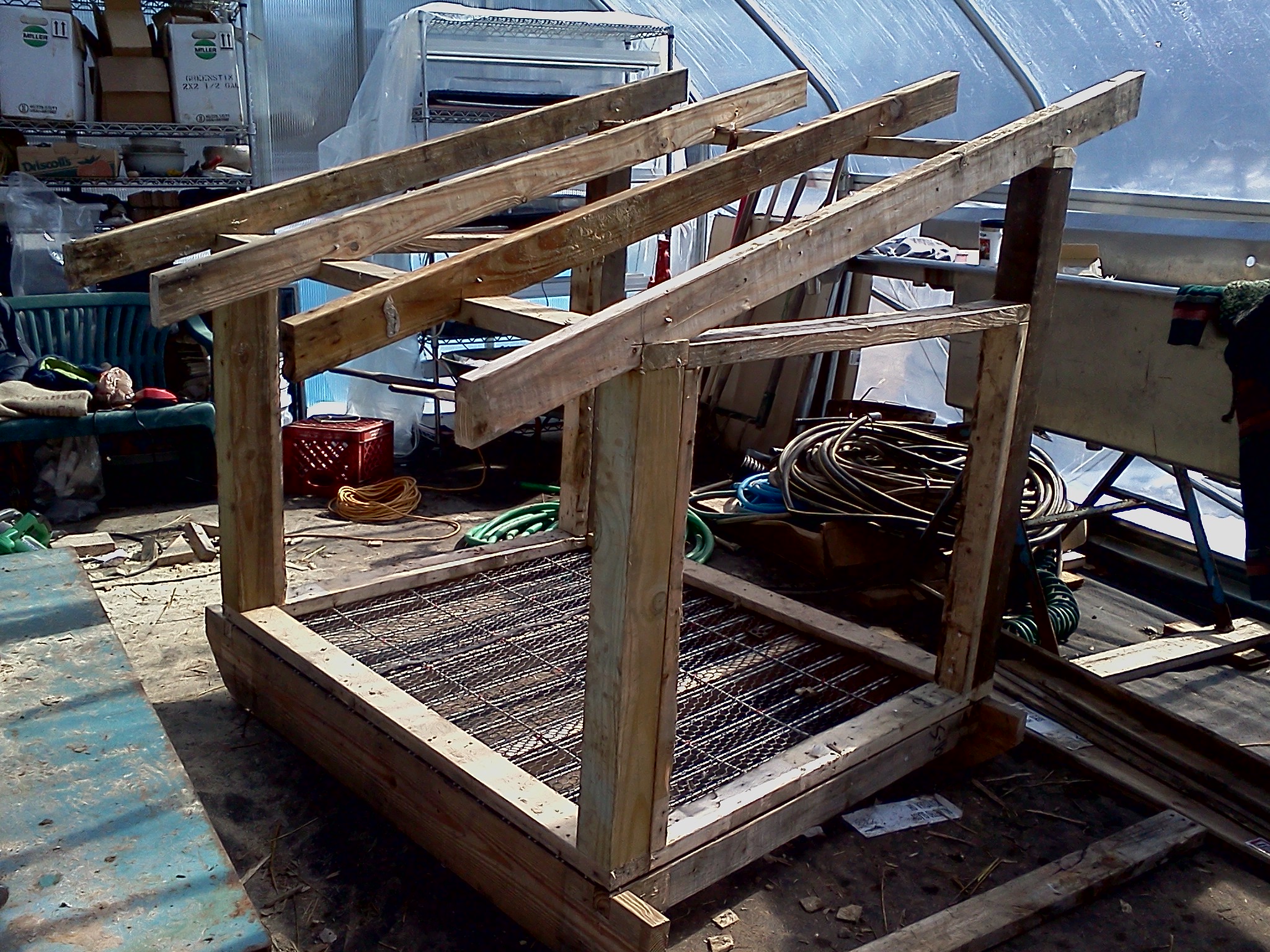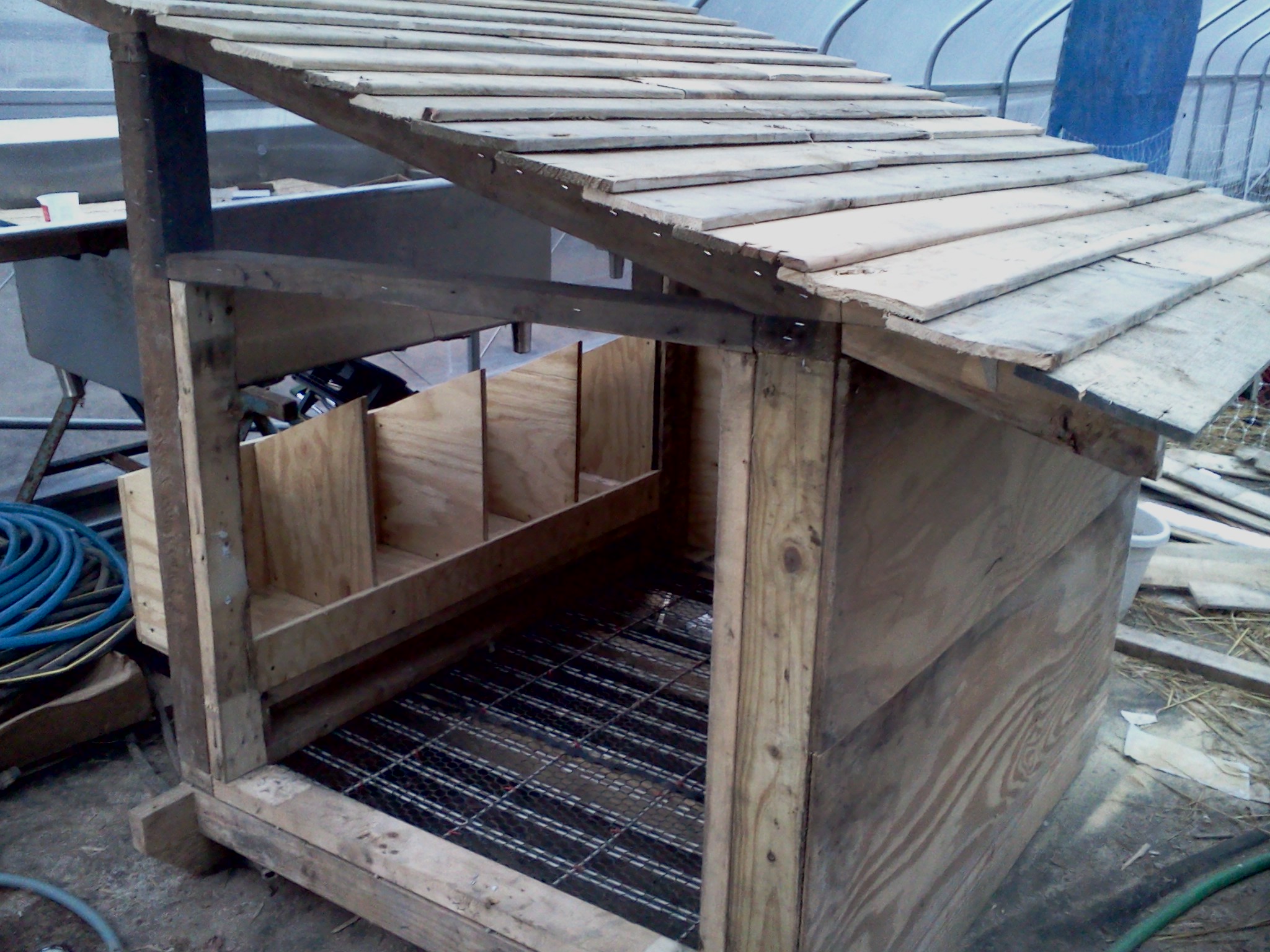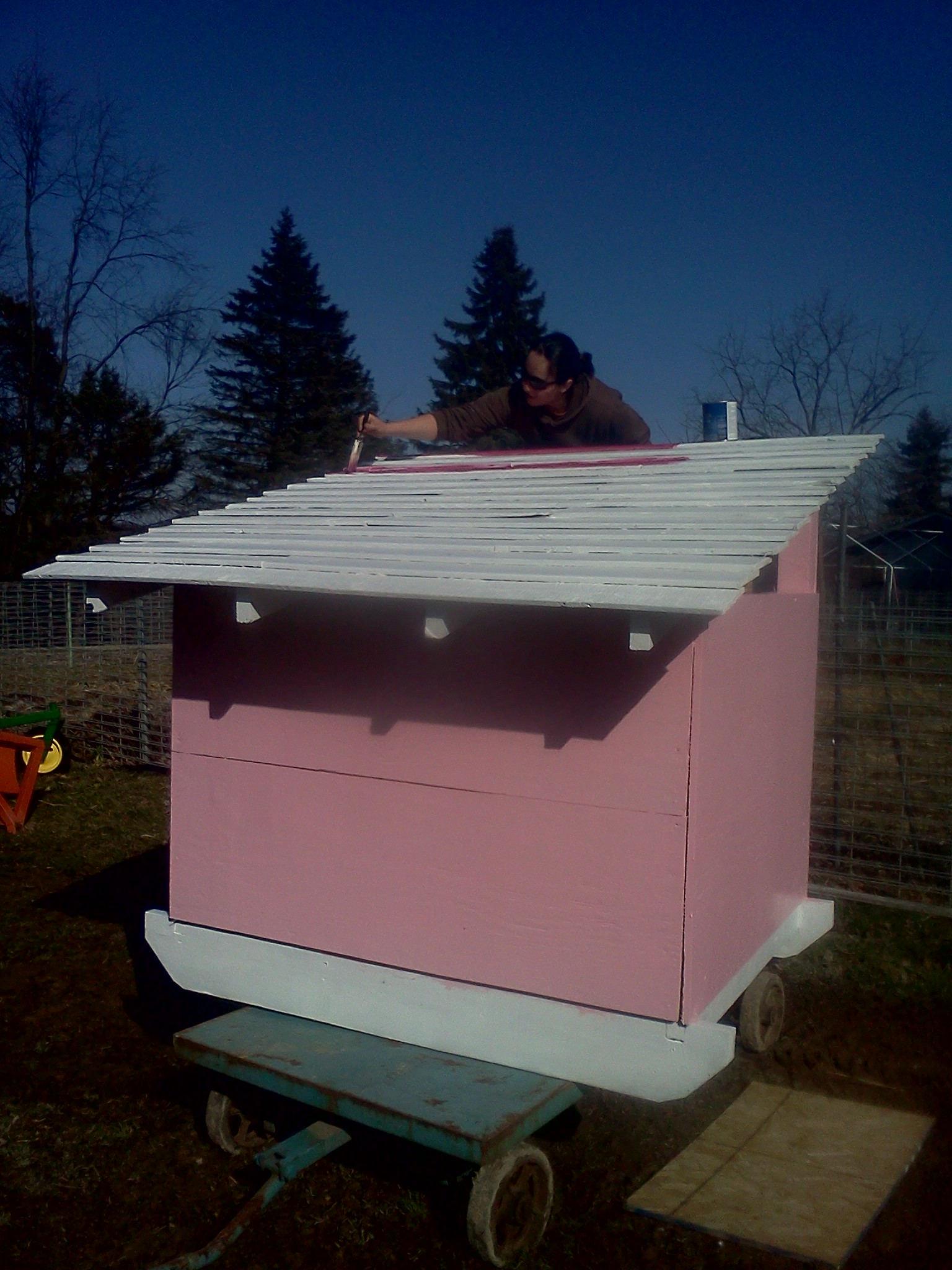Following the OEFFA Conference, Chelsea and I got started on one of our “have to build soon” projects – a mobile chicken coop that would allow us to move the chickens around the blueberry fields with electric fencing.
Back in the fall, we had heard from one of our friends that a company in Akron that puts together windows from skyscapers was giving away the shipping crates in which they receive glass. PR, our honorable scrapper and heavy machinery driver, helped us by picking up these wooden crates and delivering them to the blueberry farm. There, we sorted through the various sizes of crates, ranging from those built with 2×4′s to 2×10′s, and started disassembling five crates built of 2×4′s and one crate built of 2×8′s.


We created a hybrid coop design based on the “Minimal Coop” design in Chapter 12 of Building Chicken Coops for Dummies. The original design had many issues we needed to address for our needs: it was made for 4 hens, had a solid floor, was not mobile, and did not have nesting boxes or a roost.
We needed sleeping quarters for 13 hens, 3 ducks and 1 rooster in one mobile coop, so we added a roost. Our chickens love sleeping on roosts, and this greatly increased the floor space for the 3 ducks. Since the interior space was at a premium, we decided to mount nesting boxes to the side of the coop. This saved interior space, and also allowed for us to install a hinged roof on the nesting boxes for easy egg collection.
Our earlier experience with the ducks had been that they need to have a clean floor at all times, especially during cold weather. Their feet are sensitive and can get frostbite easily if they sleep while stepping in feces. We had made a raised mesh floor in their last coop for this reason, which allowed for the droppings to fall through the plastic mesh down to sawdust bedding, which we would periodically refresh. We removed a piece of our mesh flooring from the old coop and modified the dimensions of our mobile coop to fit this flooring. The mesh floor allows for us to use the duck and chicken droppings as a direct fertilizer below the coop wherever we move it, and saves us the hassle of stooping into the short coop door to clean it out. We also built the coop on a skid frame in order to be able to move it with the tractor around our fields.

All of the lumber in the framing and shingles was from the shipping crates. The plywood pieces for the sides were laying around the farm, full of rusty nails. We removed the nails from the plywood and reused as many of the nails from the shipping crates as possible. When we were done building, we found a couple gallons of “oops” paint at the local hardware store and had it tinted various shades of pink for a final flourish.
Total spent on the project: $35 combined for hinges, latches, and paint. If our barn hadn’t burned down in February, I suspect the total for the coop would have been $6 in pink “oops” paint.







